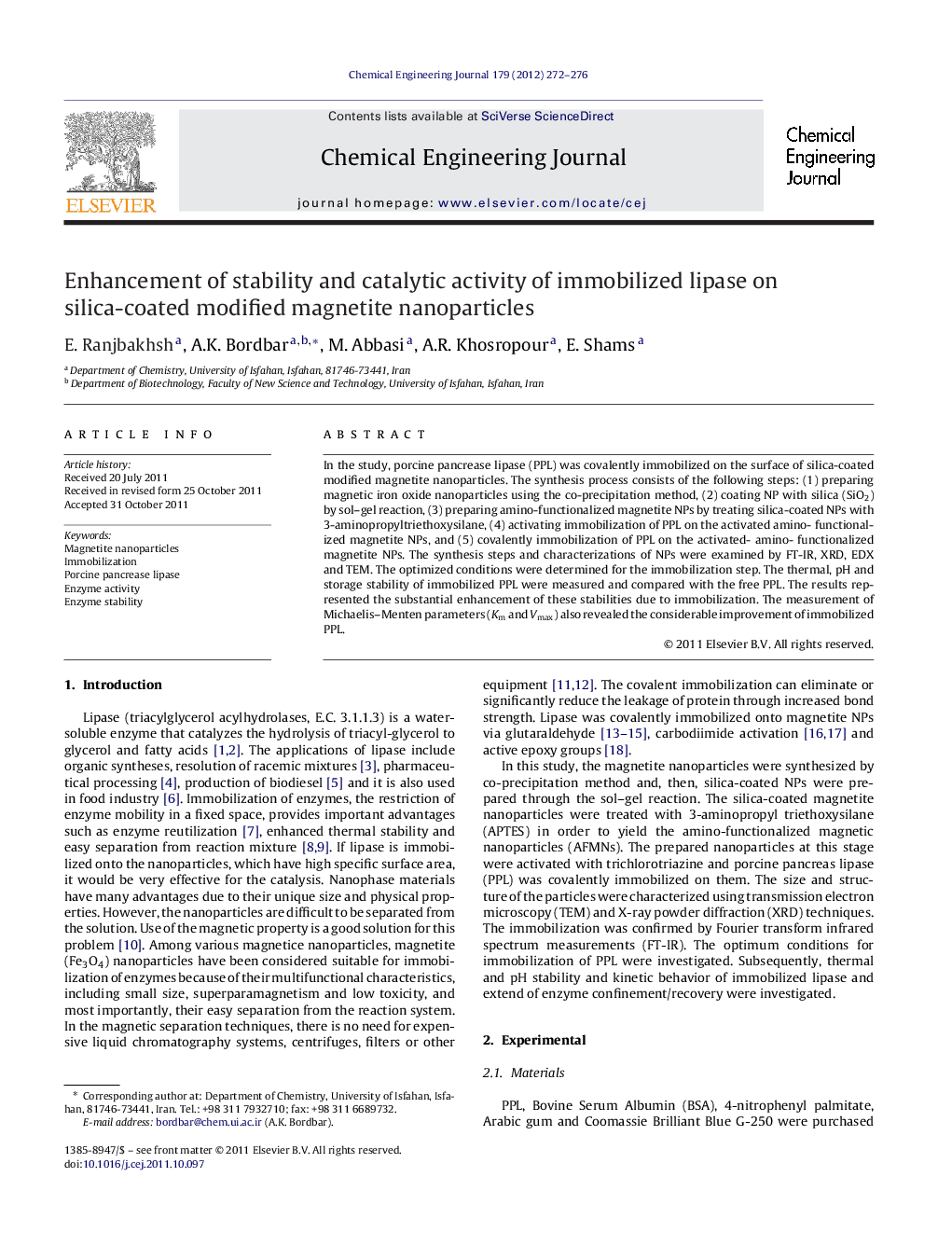| Article ID | Journal | Published Year | Pages | File Type |
|---|---|---|---|---|
| 150420 | Chemical Engineering Journal | 2012 | 5 Pages |
In the study, porcine pancrease lipase (PPL) was covalently immobilized on the surface of silica-coated modified magnetite nanoparticles. The synthesis process consists of the following steps: (1) preparing magnetic iron oxide nanoparticles using the co-precipitation method, (2) coating NP with silica (SiO2) by sol–gel reaction, (3) preparing amino-functionalized magnetite NPs by treating silica-coated NPs with 3-aminopropyltriethoxysilane, (4) activating immobilization of PPL on the activated amino- functionalized magnetite NPs, and (5) covalently immobilization of PPL on the activated- amino- functionalized magnetite NPs. The synthesis steps and characterizations of NPs were examined by FT-IR, XRD, EDX and TEM. The optimized conditions were determined for the immobilization step. The thermal, pH and storage stability of immobilized PPL were measured and compared with the free PPL. The results represented the substantial enhancement of these stabilities due to immobilization. The measurement of Michaelis–Menten parameters (Km and Vmax) also revealed the considerable improvement of immobilized PPL.
► The modified silica-coated magnetite nano-particles were synthesized and characterized by various techniques. ► Porcine pancreas lipase (PPL) was covalently immobilized on the surface of synthesized MNP. ► The optimized experimental conditions for immobilization were determined. ► The results represent the substantial improvement in pH, thermal and storage stability of enzyme due to immobilization. ► Immobilization causes the improvement in kinetic activity of PPL.
